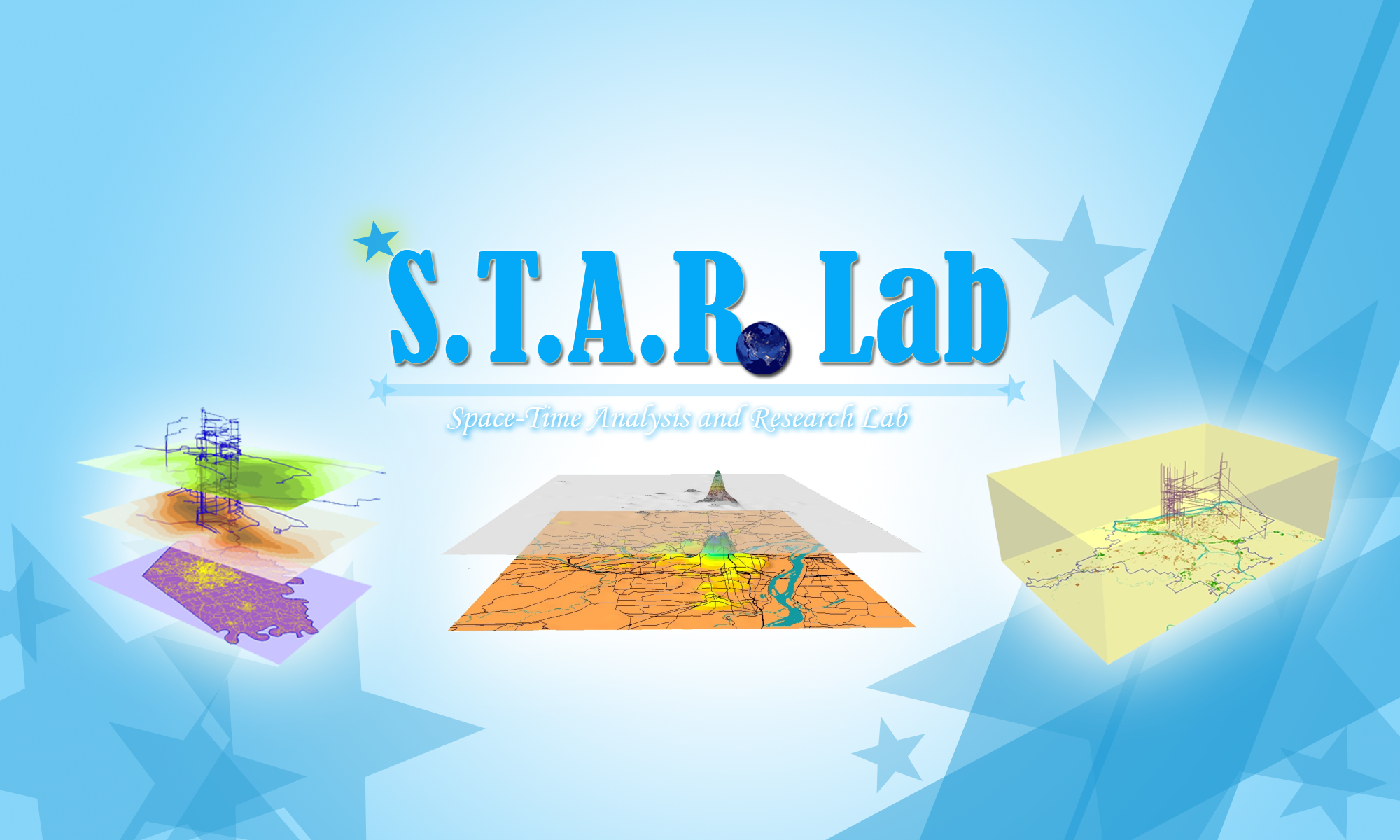| S.T.A.R. Lab addresses health, transport, environmental, and social issues in urban areas through the application of innovative geographic information system (GIS) methods. We are interested in understanding how social differences (e.g., gender, race, ethnicity, and religion) shape urban residents’ everyday experiences and perceptions/use of the built environment. We are also interested in studying how specific characteristics of the social and physical environment affect the well-being and behavior of different social groups (e.g., health behaviors and outcomes, access to jobs, social isolation, residential segregation, and spatial mobility).
Our studies often rely on the primary data we collected through activity diary surveys and in-depth interviews. The geospatial methods cover a wide spectrum of quantitative, qualitative, and GIS techniques that are applicable to a wide variety of urban issues. Our methods have several unique characteristics. They attempt to capture/reflect individual experience and thus are seldom based on aggregate data or conventional administrative units such as census tracts. Most of our work to date has been undertaken at very fine spatial scales (e.g., local streets, individual buildings, and even rooms inside a building). Further, our work has showcased how methods and perspectives thought to be incompatible can be integrated to bring forth new insights – e.g., the integration of GIS/quantitative spatial analysis with qualitative methods, and the integration of GIS/quantitative geography with feminist/critical geography.
Our research interests are quite diverse, but several overarching dimensions can be identified: (a) an emphasis on people’s everyday experiences; (b) a focus on individual differences across multiple axes (e.g. gender, race and religion); and (c) a recognition of the need to develop new methods for representing the complexities of human behavior and the urban environment. |
